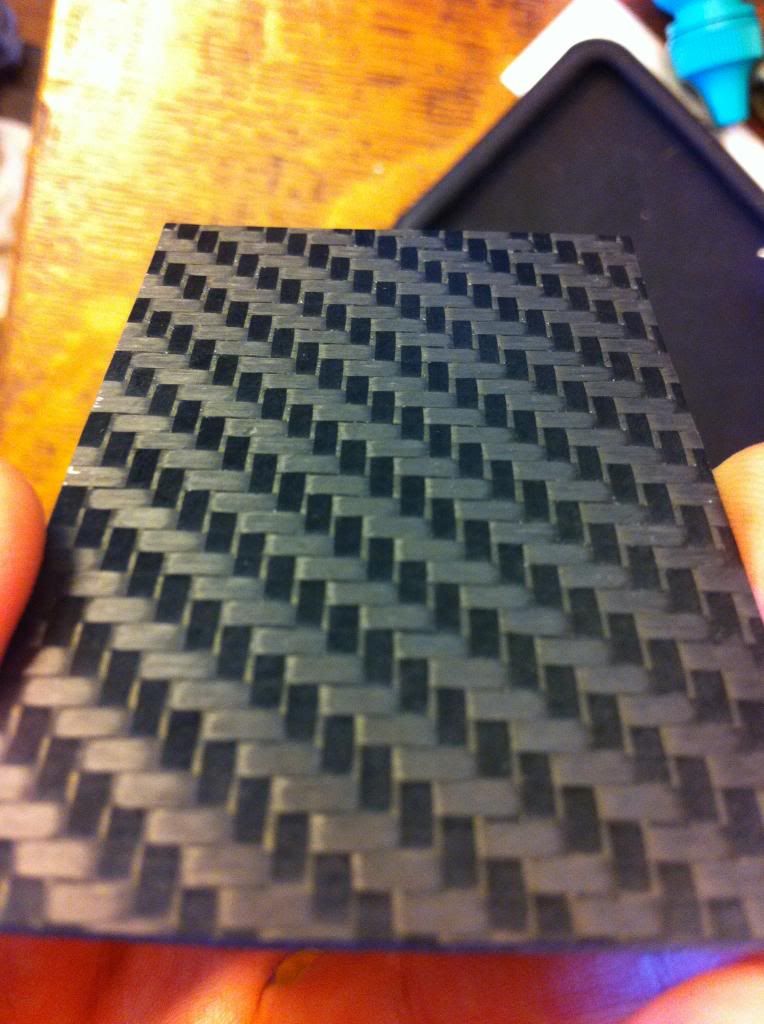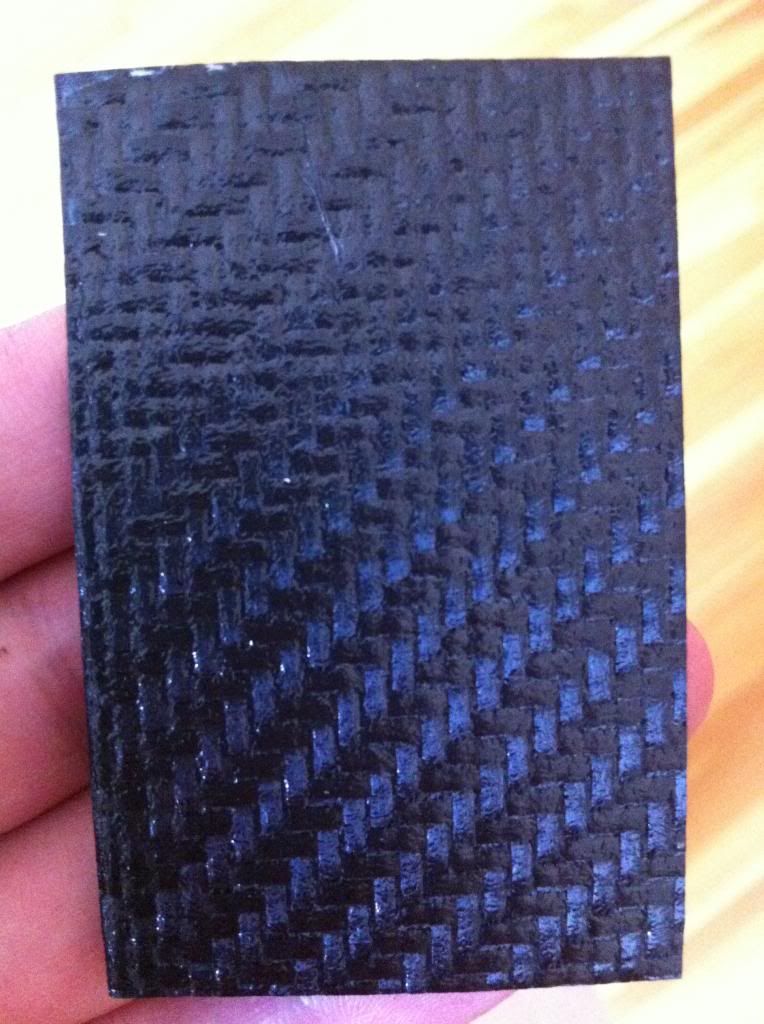If you didnt get good results out of those flat plates, you have no chance with that material.
You should be able to get a perfect surface with no debulking or ramping if its that small and flat. You shouldnt even need any breather or peel ply. I don’t debulk, ramp, nor use any breathing materials at all when I make flat sheet, and its a square metre. Comes out like glass.
The prepreg you are using is very much an autoclave material, or its gone off. Those voids will be inter-laminate aswell, making it weak. Also, it wont take a single coat of lacquer, more like 5 with sanding in between.
What he said… 
Carbon is right as usual. Debulking may improve it a little but it is not the right material for what you want and it could be out of life too… But it was worth a try. I only use two materials for OOA parts. One is for cosmetic parts (VTF261) the other is for parts that either do not need to be cosmetic and will be painted or the part is not seen (PRF’s RF464 carbon). Only the VTF has given consistant cosmetic parts that are larger than the heel plate.
Yes certainly looks like an autoclave pre-preg. From those pics, it looks like the variance is due to resin flow under curing, or lack thereof more to the point as well. What was the curing profile you followed and what was supposed to be the profile? Was it a super fast ramp up? The resin probably didnt have sufficient time to reach a low viscosity and flow prior to the onset of gelation hence your surface problems
Well, I talked to the manufacturer of the material via email. They have cured the prepreg using vacuum only and caul plates and got very good results. I didn’t use caul plates, as I was trying to replicate the same type of layup as a normal female mold/ male mold would be like.
He also thinks i need to slow down my ramp rate and to not have a dwelling period at all. So ill do my best to slow down the rate. Its difficult to do because the oven has the desired temp and the actual temp of the oven only. The only way to slow the ramp up is to open the oven doors slightly. It’s quite difficult to watch the oven all the time…
Cactus-I did try no breather or peel ply and got poor results on non tool side. The vacuum bag just went in between the tow of the fabric creating a raised surface.
Im going to try and do a test again tomorrow and see what i come up with. If all else fails, then at least i can use the material for a first layup practice run on new tools. I still have a yard and a half of it…
In case anyone is interested, I did another test layup today on a flat piece. I did four little layups using different types of release and breather material. The one that had the best finish was definitely non perforated release with breather on top.
The material had very little pinholes. Much better than the last layup. I also squared off the sides and found no evidence of a high void content which i was pleased with.

The B side of the plate didn’t look as good. You can clearly see the filaments protruding out a bit. Does everyone get that kind of finish on the opposite side of the tool??
Nice one, controlling ramp rates really is crucial and allowing a short dwell before gelation helps even more as you’ve just found out! Regarding the surface finish on the B-side - thats pretty common with breather simply due to its entirely inconsistent density. You could use dry fibreglass for example instead of breather as its density is a bit more consistent but best results will be with peel-ply if you’re looking for the smoothest B-side using simple techniques.
Use a PID to control the oven. If you design it smartly (in a box, using an external sensor, and a power outlet which can handle the oven load) then you have an item that you will have a lot of benefit from.
And find out what material you are working with (in terms of fiber weight, resin weight, and recommended cure cycle). That way the prepreg experts can help you better, and both you and others are able to really learn something.
My bad, I should have provided the resin data sheet earlier.
Here it is: http://www.tcrcomposites.com/pdfs/resindata/uf3325_v10_607.pdf
And the fabric is 197g 2x2 twill weave Carbon fiber. And I believe the resin ratio is around 40%.
And yeah, I think a PID would help a lot. Definitely worth the investment.
I’ll give it a shot with the peel ply/non perf and breather. Do people have a specific breather that they use for this application?
for bag side, you will NEVER get anything less than a bumpy surface. Even with peel ply, you are obviously sucking soft materials (peel ply, films, etc) into the weave. You can ONLY get good finish with a caul plate.
Yeah, caul plate would solve the problem for a plate. I’m thinking of trying to use Teflon coated peel ply which is thicker than the Dacron stuff. My theory is that it won’t suck it into the weave as much.
As you can see, they specify a <=5F ramp rate. I really suggest investing in a PID controller, so you can manipulate your oven, and your experiments will be consistent.
On bleeder: With 40% resin ratio, you can calculate the amount of bleeder needed, but for thin parts it can be only a very light one.
A good debulk is needed to get good results. Try to get the most from your vacuum pump. Also try to get heat from below.
It will behave just the same.
Anything not solid will bend in the vacuum. If you are doing flat plates, simply add a caul.
Well, I’m doing flat plates to test different ways to do layups on female and male tooling.
Next time, in going to try and use lighter breather with peel ply and see what I get there.
Does anybody use air tech 606 nylon breather for prepreg layups?
I’d be willing to go in on the VTF261 buy. I get mine from easy if we can combine for a better price, it’d be worth it.
I think the Teflon coated fibreglass will improve the back face finish.
I have also used a gloss clear mylar film that had a coat of frekote on it and this works great too.
The film is like that in overhead projector sheets or you can ask a sail maker. It’s the stuff they make (or used to make) windsurf sails from. There are a few different grades/thicknesses.
Interesting suggestions. I will be working in a school project soon involving spread tow OOA prepreg. I think that alone will improve the back side tremendously just based on the nature of the material.

